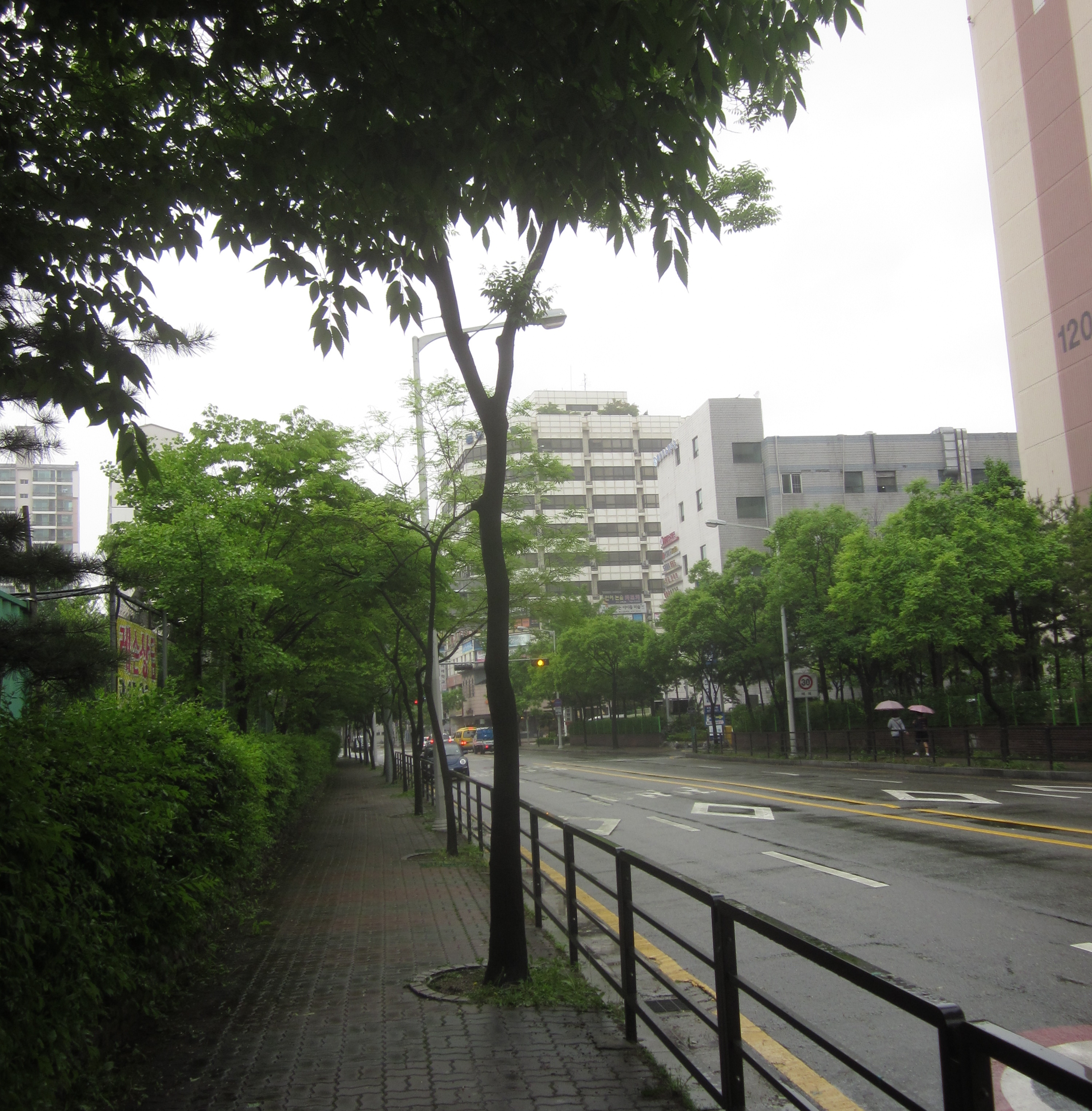(Poem #122 on new numbering scheme)
I like to argue semantics, it is fun. The thoughts will run, do antics; then it all falls down like sticks.
– an englyn penfyr
(Poem #122 on new numbering scheme)
I like to argue semantics, it is fun. The thoughts will run, do antics; then it all falls down like sticks.
– an englyn penfyr
(Poem #121 on new numbering scheme)
Three students said they hate me, just today. That's what they say, to feel free from the stresses of study. Another student, leaving, left a note: "For years," she wrote. "Your teaching gave me a gift of meaning."
– more englynion penfyr. Note that the student’s quote is invented – no Korean ESL student writes in poetic forms – but I did receive a note with this type of message.
(Poem #120 on new numbering scheme)
Clustered red and brownish-gold - these last leaves fall; the world grieves, growing cold; then I begin to feel old.
– an englyn penfyr
(Poem #119 on new numbering scheme)
Poetry is about nothing except... itself. Precepts be damned. No. Things speak in their moment. No.
– another englyn penfyr. I kind of broke the caesura rule, though, in the first line. I’ll get the hang of it…
(Poem #118 on new numbering scheme)
Dream feeling: being held down, like a moth, pinned, rendered slothful. Look: brown, piled leaves. So I wait. I frown.
The above is a syllabic poetic form called an englyn penfyr, a type of englyn, which is Welsh in origin but also written in English, historically, by poets with Welsh connections, such as W.H. Auden or Dylan Thomas.
I have decided this is the new poetic form I shall pursue obsessively, in sequel to my 99 nonnets. As best I can tell, I have posted 8 englynion previously on this blog, so this would be number 9. Englynion are not, typically, restricted to single stanzas – although they may be, too. However, for purposes of counting, I shall count each stanza separately, as it will help me to feel more prolific should I pursue enchained, longer poems.
I wrote these little poems. They are attempts at the Welsh traditional short poem form called englynion – specifically, the englyn unodl crwca, or crooked one-line englyn.
(Poem #24 on new numbering scheme)
Sunday looking now out the window, solid gray clouds, drawn just so - i lie down to read. let go of winter, wishing for rain, but no. Monday the puddle of water shines, the morning sun's brightness finds streaks of mud and small cracks; signs like a map's matching patchwork of lines.
These forms are quite restrictive, in the technical sense. I seem to prefer trying to write inside such constraints, sometimes.
![]() [daily log: walking, 7km]
[daily log: walking, 7km]
(Poem #19 on new numbering scheme)
The almost-full, white moon sighs. Riotous, ravenous green spring writhes, a flock of white petals flies, to resist it seems unwise.
I poetized (poeted? poetated?) that while walking home from work. The poem more-or-less follows the pattern of the Welsh poetic forms called englynion. Specifically, it’s an englyn unodl union (according to wikipedia).
![]() [daily log: walking, 5 km]
[daily log: walking, 5 km]
I was composing some englynion (englyns – a Welsh poetry style conceptually similar to haiku). Most are terrible, but here are two I liked.
(Poem #9 on new numbering scheme)
my walking is like talking. stories told to the earth. old stories sing new from my footsteps. walking. the ant pushes against stone with small feet. its silent creeping alone, until finally it finds home.
Here is a picture I took the other day (a rainy day) looking toward my building – it’s the tallest one in the center in the farthest distance. I live on the seventh floor. Ilsan has rapidly become summery.

![]()
I wrote this englyn penfyr.
(Poem #6 on new numbering scheme)
the morning sky looked too cold, and dim white, my window's light like a fold of feeling, and it looked old.
I see these Welsh poetic forms as something offering the same brevity as haiku but more “native” to the Western – specifically Britannic – tradition, especially with their emphasis on rhyme, consonance and assonance.
![]()
I’ve been experimenting with writing englyns – these are complex, rigid Welsh poetic forms – not in Welsh, though. This is a small englyn penfyr I made:
nobody sees sky’s glimmer, the sun falls,
-nobody feels the summer-
nobody sees air’s shimmer.
Sometime back I tried writing one in Spanish, too – probably not as good. And this one is about being angry:
a veces siento enojo de perro,
ira de piedra, un rojo
enfado de hombre cojo
Traditional Welsh poetry is fascinating to me because of its demands for such highly structured forms – almost like Japanese haiku, for example. And, as Georges Perec once pointed out (and probably others), it is constraint that leads to truly innovative artistic expression, and not freedom.
I remember as one of my most productive periods of poetry-writing the time when I was experimenting with highly constrained forms such as the alexandrine sestina, with additional non-traditional constraints on such things as “characters per line” (thus I could produce completely justified poetic lines using monospace type with no additional spaces).
[UPDATE: the first englyn above was included in my daily poem series and republished on this blog on June 9th, 2021, as poem #1774.]